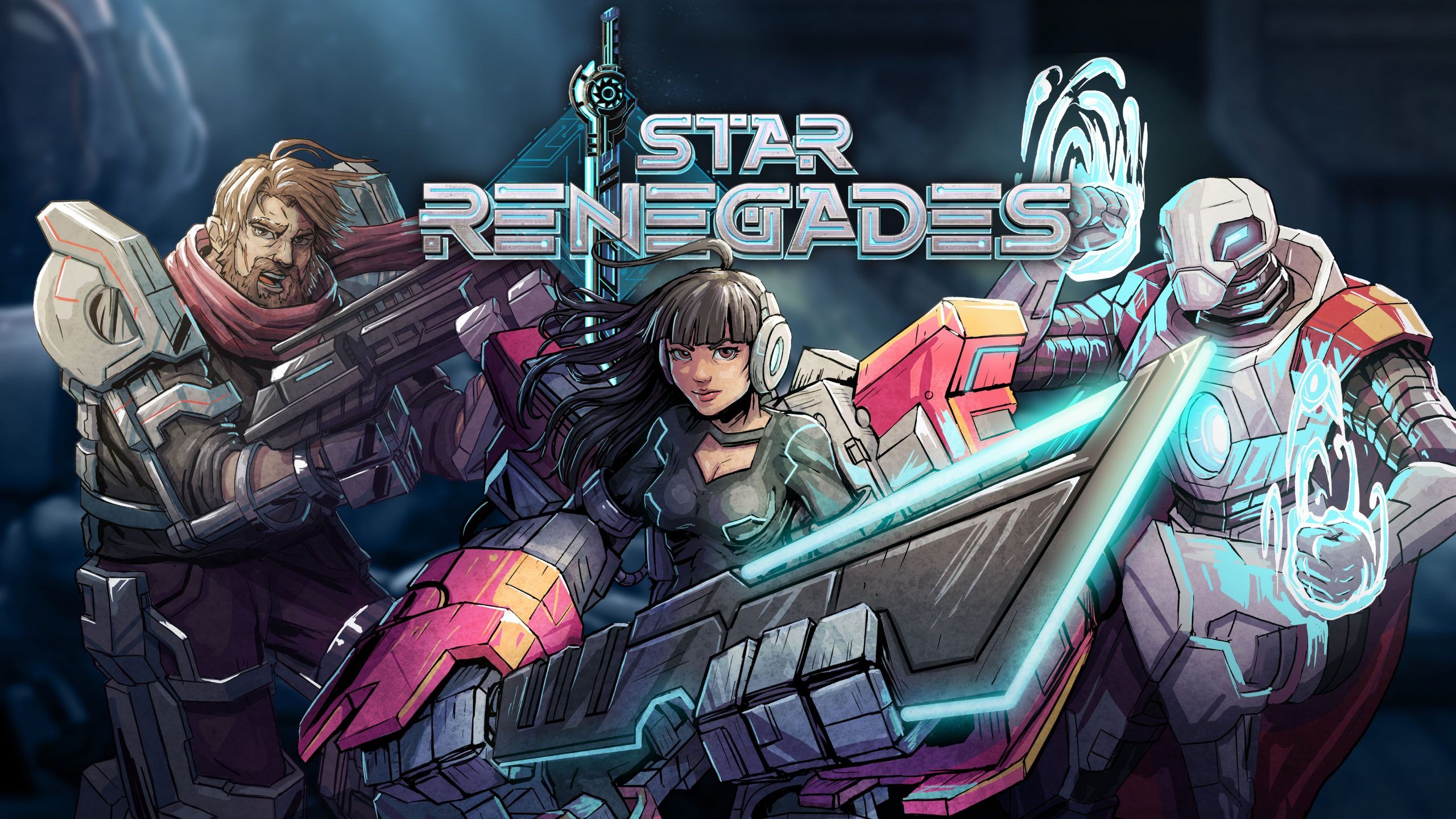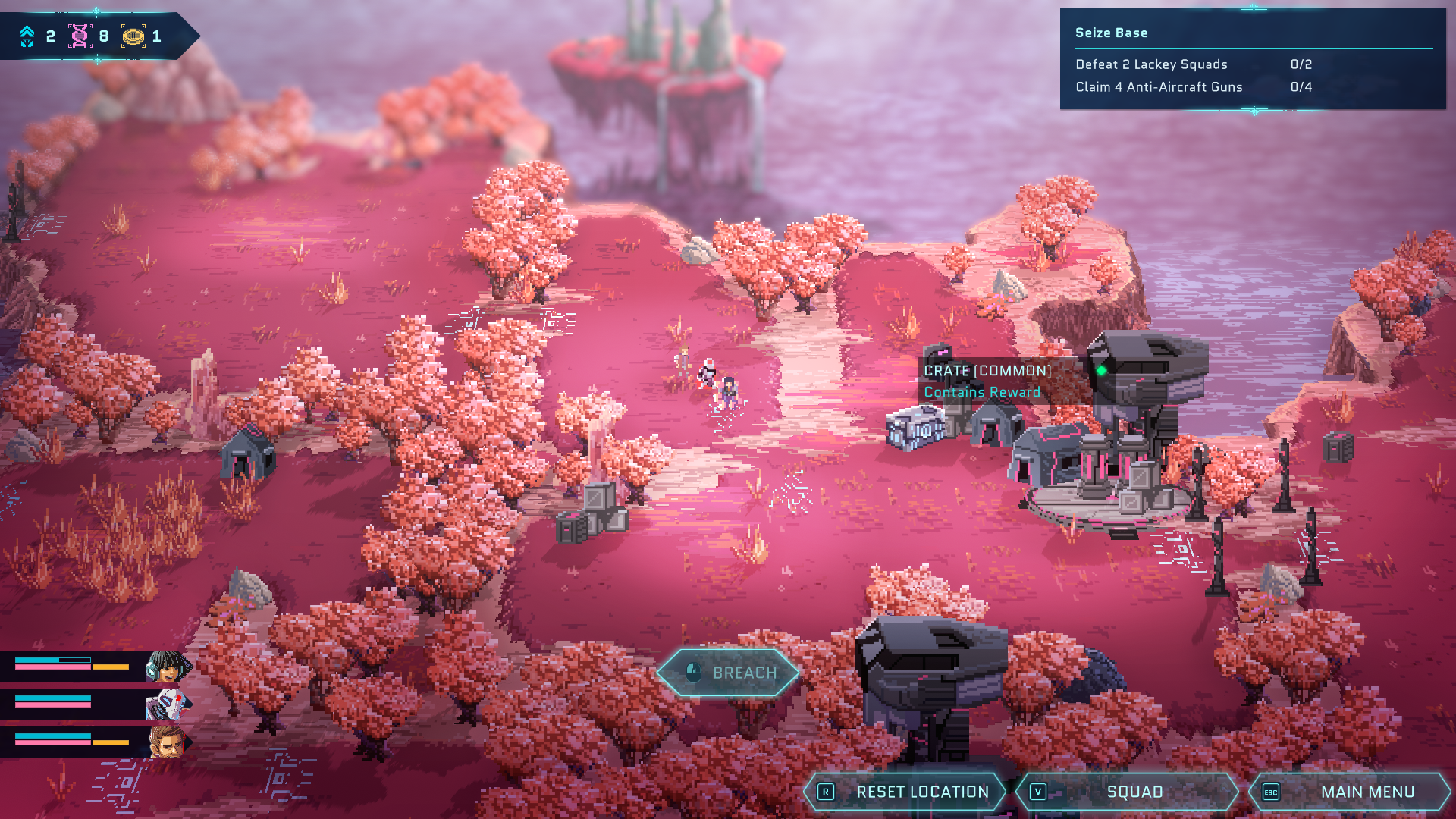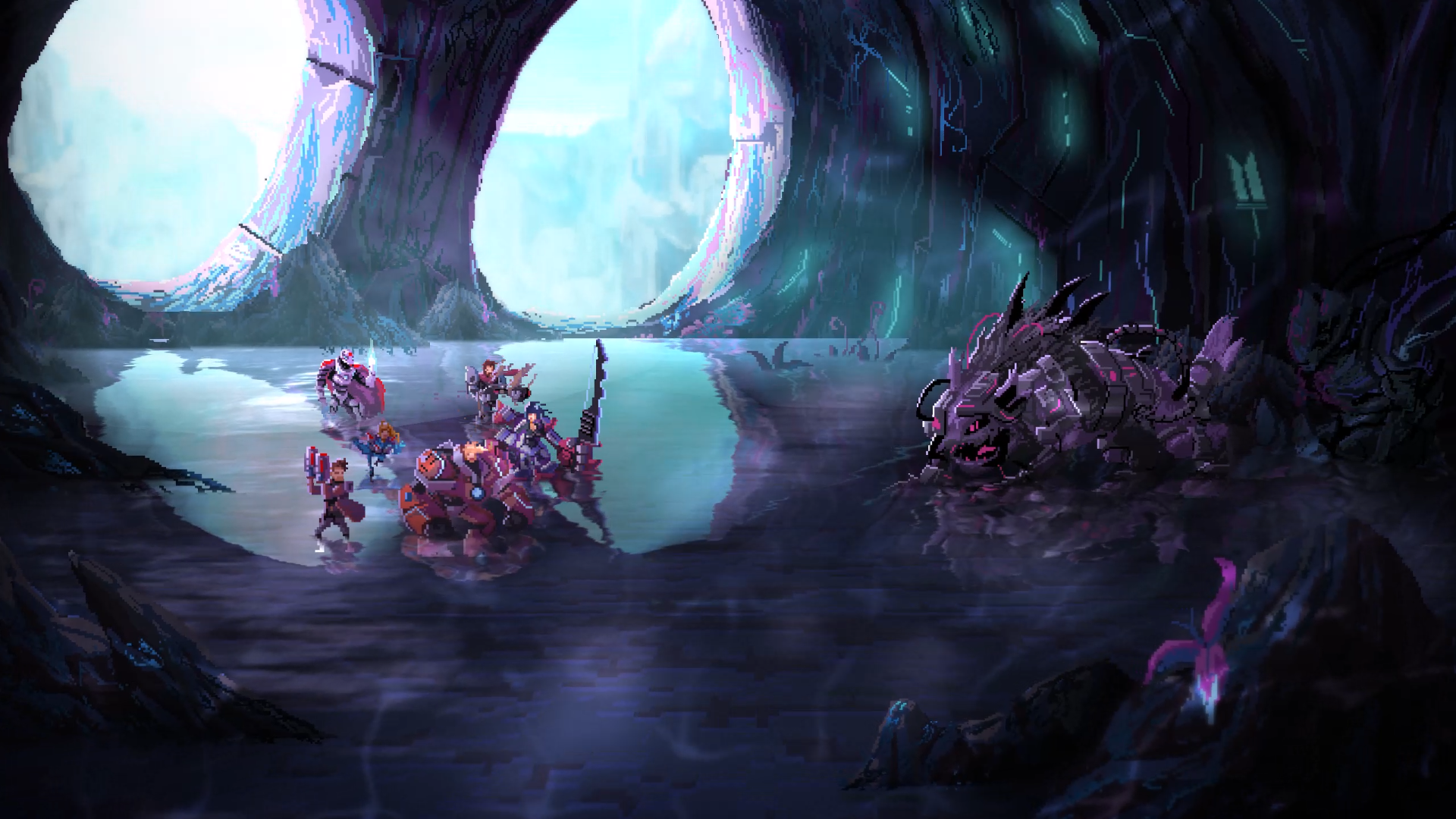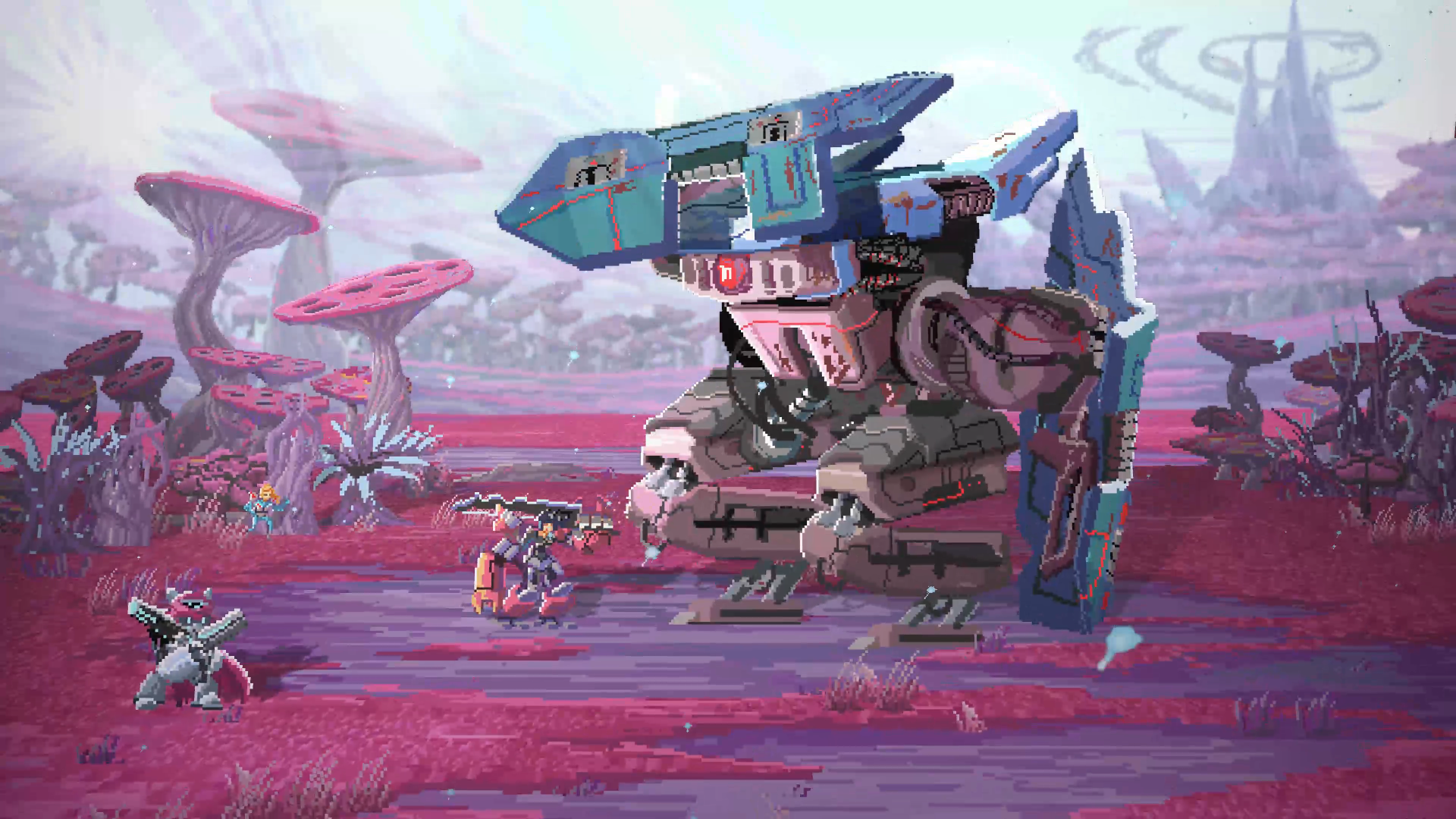Pixel art has been undergoing somewhat of a renaissance within the indie scene for the last few years now. Massive Damage, Inc.’s upcoming game Star Renegades is part of this resurgence. It takes its own spin on the artstyle and gears it towards an interesting sci-fi setting, looking very good while doing so.
I had the opportunity to go hands-on with the first couple of missions in Star Renegades and from what I played, it’s an interesting rogue-lite strategy RPG full of varied systems, quirky characters, and slightly inconsistent dialogue.
The early moments of the game set you up for a big revenge story, crossing multiple realities in order to exact vengeance on invading forces. The game quickly, however, seems to forget about the story in favor of witty dialogue exchanges between characters and its interesting gameplay loop, which isn’t necessarily a bad thing. Strategy games aren’t always known for the best stories, so I’m hoping this continues throughout and is just supplementary to the gameplay.
The core gameplay of Star Renegades is split into two parts, exploring and battling, with each section littered with various systems. You enter your scenario on a randomly generated map that has rebellion forces scattered throughout who are trying to impede you from completing your goal.
The missions I played in this build weren’t particularly creative or different from anything else I’ve played within the strategy genre, but what did differentiate Star Renegades from its counterparts was the battle system.
When you encounter foes, you enter (with quite a long jarring delay at points) what the game calls a “deterministic combat system.” Everything within battle takes place on a timeline displayed at the top of the screen. The timeline is completely transparent, showing you how and when the giant robot enemies plan to attack, allowing you to then strategically plan your turn. Some of your attacks hit harder but will fall further down the timeline leaving you open, while others are quicker but are likely to deal less damage. Sometimes, it’s also just best to not attack at all.
[pullquote]The combat in Star Renegades is extremely tactical and is all about being opportunistic and having a solid but adaptable plan.[/pullquote]
The most basic, but effective method I found was simply to attack before the enemies could attack me, which in doing so led to landing critical hits. By attacking first you could also stagger and then break the enemies, with each attack pushing the adversary further down the timeline. This lets you knock them off it and stop them from attacking this turn. The combat in Star Renegades is extremely tactical and is all about being opportunistic and having a solid but adaptable plan.
Like most RPG battles, Star Renegades has strengths, weaknesses, and immunities system incorporated into it. This adds yet another layer of depth to combat. Yes, your light attack will be quicker and allow you to hit first, but it will deal significantly less damage to your enemy and might, therefore, be counterproductive to your overall strategy. Battles also have combo attacks, which are stronger moves that take place between two of your party members whose relationships have been leveled up by the campfire (I’ll touch on this later).
Not only are the battles incredibly deep system-wise, but they also look and sound great too. The attack animations are nice and the sound design is fantastic with each move or enemy death sounding slightly different to the last - it's really damn cool.
While the battle system is unique (at least as far as any game I’ve played) some of Star Renegades' other features are borrowed or at least heavily influenced by other games. The opposing rebellion forces have “adversaries” – enemies that are unique and get promoted, evolve, and grow whenever they defeat you. It's very much like the nemesis system from the Middle Earth: Shadow of Mordor/War games. It's a system which when first released I (as well as many in the industry) thought would become much more commonplace within games. However, this seems like one of the first instances I've seen of it outside of its originating series, and most importantly, it has been implemented well.
Depending on what you are tackling you may also have to camp partway through or at the end of a mission. This is a system that, to me at least, feels reminiscent of camping within Darkest Dungeon. This time though you use cards to determine your actions. When you set up camp you have a predetermined amount of action points which allows you to play cards and use up these points to benefit your party. Cards range from healing and armor repairing to relationship building. The relationship-building cards help boost the affinity between two party members which in turn helps improve the aforementioned combos in battle. I'm not sure of the necessity of it being cards rather than character-based skills, but it's not a huge gripe.
Other influences within the game are slightly more referential but are welcome nonetheless, with small nods to Super Smash Bros. and Star Wars creeping in. Most importantly of all, you can pet the dog in Star Renegades.
There are a couple of further systems in Star Renegades based around leveling up. The main system is simple and sees you earning DNA after every battle and then investing that into leveling up your party members. Secondary to that, when you return to base, you can spend your research points, earned by beating or damaging enemies, on new heroes, upgrades to existing heroes, and perks for your party.
Star Renegades states that there will be 13 different classes at launch. While the game itself is deep and varied, I didn’t particularly see that in the classes I got to use. Visually and personality-wise, each one is unique but I didn’t see a huge difference in play style. I’m willing at this point, based on how many systems this game has, to chalk it up to the fact my party members were all level one and at the beginning of the game, and the more they level up the more they’ll evolve and differentiate themselves. The differing personalities added some light relief and fun dialogue in what is otherwise a thematically dark game, although, at times, the conversations could feel quite contrived.
Overall, what I got to play of Star Renegades showed a deep and complex strategy RPG with some genuinely interesting gameplay systems integrated throughout. The systems and gameplay loop should be strong enough to support what I feel is, at least at this early stage, a slightly lukewarm and unoriginal story. The two missions I played have done more than enough to intrigue me and have definitely made me want to see how the game evolves before it comes out on PC and consoles later this year. It's certainly one to keep an eye out for.




